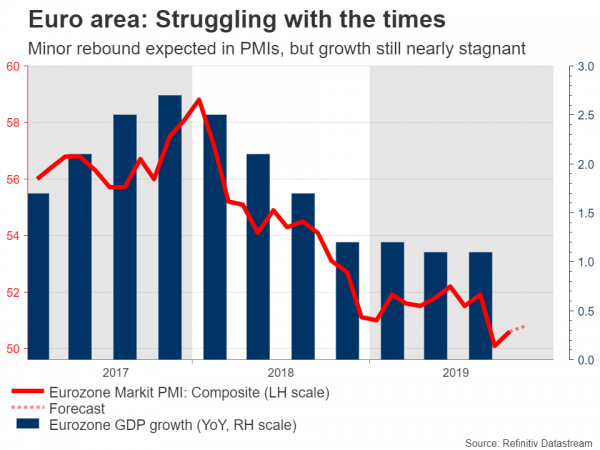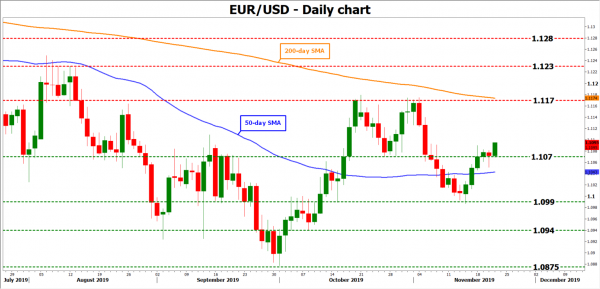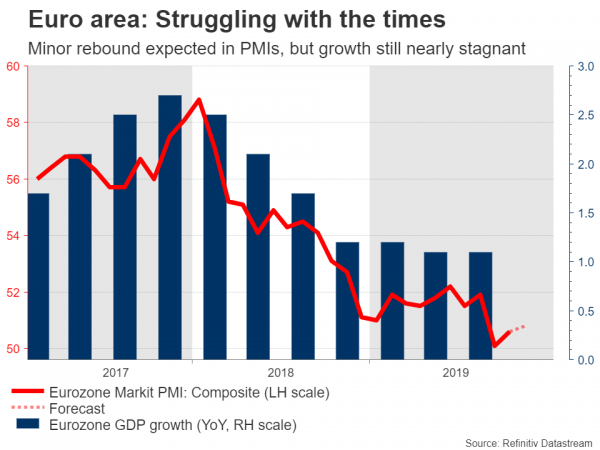In the euro area, preliminary PMIs for November are due out at 09:00 GMT on Friday. The French and German numbers will be released a few minutes earlier, so any market reaction could begin with those. Forecasts point to an uptick in all figures, but even if those estimates are met, that would still point to stagnant growth. The outlook for the euro therefore remains bleak, not least because Germany avoiding a recession means that no meaningful fiscal stimulus will come anytime soon.
Still in dire straits
While the upcoming PMIs are expected to show some improvement, there’s not much to celebrate. The composite PMI – which blends the manufacturing and services sectors – is anticipated to tick up to 50.9 from 50.6 previously, barely rising from the 50 level that separates expansion from contraction in the euro area. In other words, while growth may be stabilizing, it is doing so at extremely low levels that are usually associated with an almost stagnant economy.
What’s more, the likelihood for a substantial upside surprise in these figures is relatively low, as the October PMIs suggested that economic growth may even turn negative in Q4, considering how weak some of the forward-looking data points in the surveys were.
When good news isn’t good
Even though Germany avoided a technical recession in the third quarter, that may in fact not be as positive as it seems. It means that the political pressure on Berlin to enact a major fiscal stimulus package in order to boost growth has diminished substantially. Remember, Germany is the only major Eurozone economy with a low debt-to-GDP ratio and therefore with any real space for fiscal spending.

This is especially important because monetary policy is already exhausted following years of heavy money printing by the European Central Bank (ECB), so any more monetary stimulus will probably not do much to turn the situation around. Hence, until Berlin decides to roll out a fiscal package, there’s little prospect for any real recovery in the euro area. Judging by the latest comments from Chancellor Merkel, that isn’t happening anytime soon.
Dark clouds here to stay?
As for the euro, it’s difficult to be optimistic. Interest rates in the euro area will most likely remain at rock bottom in the coming years, and most certainly lower than those at the Fed, implying that America may continue to outshine Europe in terms of attracting capital inflows. The euro may therefore underperform the dollar going forward.
For this to narrative to turn around, either the euro area needs a large fiscal stimulus package that truly boosts growth, or the Fed has to start cutting rates much more aggressively in order to erode America’s rate differential advantage. None of these is likely over the coming months.

Looking at euro/dollar technically, immediate support to declines may come from the 1.1070 region, which halted the pullback on October 25. Even lower, attention would turn to 1.0990.
On the upside, the first obstacle for the bulls may be the 1.1170 area, which also coincides with the 200-day simple moving average (SMA).


 Signal2forex.com - Best Forex robots and signals
Signal2forex.com - Best Forex robots and signals




